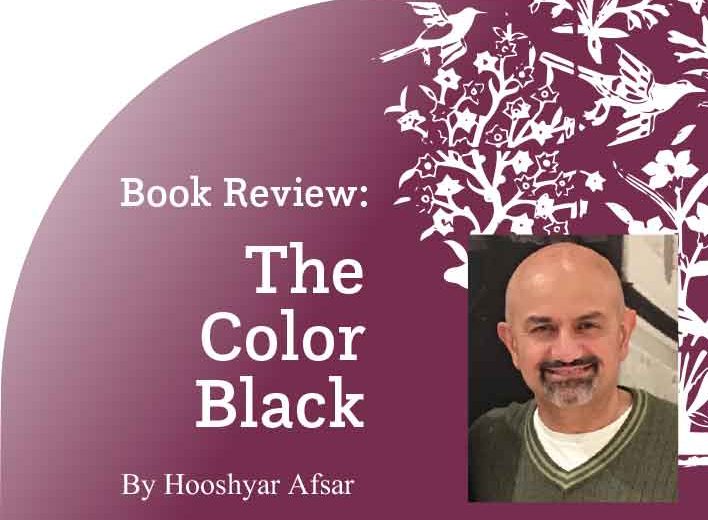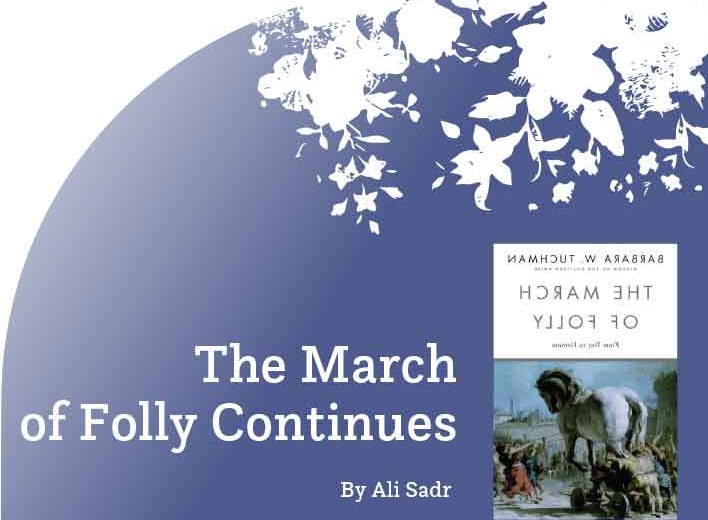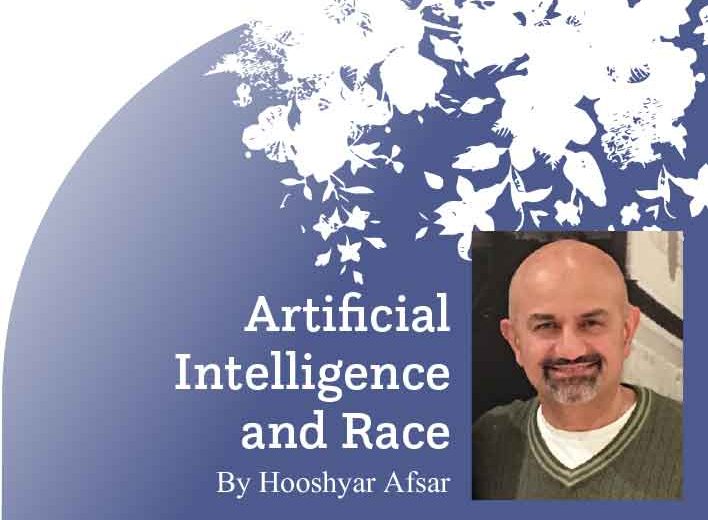by Hooshyar Afsar
The 2020 presidential election once again casts a national spotlight on the electoral college process. We now know that Joe Biden and Kamala Harris were elected with over 81 million votes and 306 electoral votes (with 270 required for being elected). Yet, with all the unsubstantiated claims of election fraud by the Trump camp (that were defeated in about 40 court cases in five “battleground” states for lack of evidence), confusion around the whole electoral college process, the role of state legislatures, and the certification process itself is at its highest. I intend to shed some light on the historical aspects of the electoral college, its present state, and its prospects for the future.
Why An Electoral College?
Let’s start with the original U.S. Constitution. Article II of the Constitution of 1787 is about the executive branch and, naturally, that’s where the term “electors” for president is first used. The term “electoral college” never appears in the original seven articles or the 27 amendments to the Constitution. What does the Constitution say about electors? After stating that executive power will be in the hands of the president who is elected for a four year term along with the vice president, the second clause (paragraph) of Article II continues by saying: “Each state shall appoint, in such Manner as the Legislature thereof may direct, a Number of Electors, equal to the whole Number of Senators and Representatives to which the State may be entitled in the Congress.” Basically, the number of each state’s electors is the sum-total of its representatives to the House–its two senators and state legislatures decide how they are appointed. The rest of Article II, Section 1, is about who may not be an elector and the process of electing the president and vice president, plus the tie-breaker mechanism that is a complicated mess as we shall see further down in this article. As you can see, the Constitution is rather brief on the process of electing the electors and it is left for the states legislatures to decide.
So, why did the framers come up with such a convoluted process instead of the simple national popular vote? Contrary to the myth that the electoral college was created to balance the representation of states with a smaller population versus the more populated ones in choosing the president, the framers of the Constitution had other reasons in mind. In fact, it was the Senate that was created as a body to balance the power of states with smaller populations; thus the idea of each state having two senators, regardless of its population. The only federal body in the original Constitution whose members were set to be elected “by the people” is the House of Representatives. Even the election of senators was left to state legislatures until the ratification of the 17th amendment in 1913 that switched the electoral process for that body to a straight popular vote. The real reason for the electoral college goes back to the 3/5th clause in Article I, Section 2. One may ask: but Article I is about the legislative branch and Section II is about the U.S. House of Representatives, so why does that have anything to do with the electoral college? The answer is: nothing directly, yet everything indirectly.
The 3/5th Clause and the Shame of Slavery
What is the 3/5th clause? Article I, Section 2, of the Constitution covers the election of the U.S. House of Representatives. In order to determine the number of representatives for each state, Article I, Section 2, says that there needs to be an enumeration of population (we now call this the “census”) every ten years, starting in 1790. Then that Constitutional clause addresses who should be counted and goes on to say that the population “… shall be determined by adding the whole number of free persons, including those bound to service for a term of years, and excluding Indians not taxed, three fifths of all other persons.” In plain English, it means all free people (men) plus indentured servants who were similar to enslaved people but had a term of enslavement years, minus Native Americans, plus three fifths of enslaved people for life (also called chattel slavery) who were of African origin. Notice that the Constitution doesn’t use the term “slave” or even “negro.” In fact, nowhere in the original Constitution are the terms “slave” or “slavery” used; only the 13th Amendment, which abolished slavery in 1865, used the term slavery. The framers of the Constitution, many of whom were slave owners (James Madison, George Washington and, as was recently discovered, even Alexander Hamilton), knew that enslaving people did not go well with the pretense of liberty and democracy. Many of them intellectually opposed it and were ashamed of it, yet went ahead with it and profited from it.
So, how is this related to the electoral college? The way to understand this relationship is to consider the alternative of electing the president by popular vote. If that had been the process, then what would happen to the states that had a large enslaved population? Enslaved people at the time did not have any rights, were not legal citizens, and obviously could not vote. The three-fifths clause meant that they were considered to be less than human. According to the first U.S. Census of 1790, there were roughly 3.9 million people in the United States, of whom 694,280 (17.8%) were enslaved persons. Yet seven states (five of them in the South and two bordering the South) had 93% (640,023) of the enslaved people. This meant that the “slave” states, mainly in the South, would have a significantly smaller number of votes for electing the president compared to their real population if the president were elected by popular vote. For example, Virginia, the most populous state of the Union with over 19% of the U.S. population at that time, had over 292,000 enslaved persons (39.1% of its total population). Assuming 40% of this enslaved population were adult male (women could not vote until passage of the 20th Amendment in 1919), this meant the loss of almost 117,000 potential voters in the presidential elections. So, the advent of the electoral college gave these states many more electors (therefore more weight) based on the inclusion of 3/5th of all the enslaved people (by way of representatives to the House of Representatives, plus two senators each). Virginia had 12 electors, the highest on the list, and next was Pennsylvania (a non-slave state) with 10. Plainly, the electoral college is another shameful vestige of slavery.
The Tie Breaker Is a Complete Mess!
While a system of popular vote is unlikely to run into a tie (an issue that could be resolved with a runoff election between the top two vote earners), the framers came up with a messy process in Article II of the Constitution that would send the election of the president to the House of Representatives (and election of the vice president to the Senate!) in case no candidate received a majority of electoral votes. Add to this the fact that in Article II, the vice president is the candidate who receives the second most electoral votes, and you have a complete mess that almost ended in a civil war during the U.S. presidential election of 1800. In that year, with the emergence of the first political parties, Thomas Jefferson and Aaron Burr–both Democratic-Republicans–received 73 votes while the candidate of the opposing party (the Federalists), John Adams, received 65 votes. The Federalists were so anti-Jefferson that when the election went to the House of Representatives, the first 35 ballots ended in a tie and only after Jefferson appeased the Federalists and agreed to a certain number of their demands, was he elected on the 36th ballot. To fix this mess from happening again, the 12th Amendment of the Constitution was ratified in 1804 to separate the ballots for electing president and vice president, yet it preserved the messy tie breaker systems in the original Article II.
“One Person, One Vote” is Neglected!
Another major issue with the electoral college is that the person with the smaller number of popular votes can become president. This negates the foundational democratic principle of “one person, one vote” and it has happened five times in U.S. history. It has occurred twice in the last 20 years alone, during the Gore vs Bush Florida Fiasco of 2000 and with Clinton vs Trump in 2016. The other three times were in 1824, 1876, and 1888. It also causes the attention of political campaigns to be only on what are called “Battleground States.” Those states are the only ones up for grabs and presidential campaigns pretty much ignore the other states, depriving over 200 million people from active participation in the presidential campaigns.
The Electoral College Today
While during the first presidential election in February 1789 only five states went by popular vote for choosing the electors, by 1880 all the states used popular vote. Today, 48 states have a winner-take-all process, while in Maine and Nebraska, two electors are elected by overall popular vote in the state and the remaining electoral votes are determined by a plurality of the vote in the Congressional districts.
Although many people may think that, with the exception of the election of 2000, the presidential winner is determined on the night of election, that is only news organizations’ projections. Media giants such as CNN, NBC, ABC, FOX, and AP have teams that make projections per state based on the votes reported and their statistical analysis that gives them a high level of certainty to “call” a state for a certain candidate. The media projections have become a tradition, but the transition to a new administration officially starts by order of the General Services Administration after the projection. Yet, each state has its own rules and regulations and its own deadline for certifying the elections. Then the electoral college has a detailed procedure for certifying the presidential election with a deadline of the first Monday after the second Wednesday (don’t ask me why!) in December (that was Monday, December 14 in 2020). We shall call it “Certification Monday.” The whole process for the electoral college certifying the elections and the final electoral votes counted and recorded is written into federal law in Title 3, Chapter 1, of the U.S. Code.
Basically, on Certification Monday, electors in each state meet and issue official certificates that identify the electors of the candidate who won the state. Then, on January 6, the House of Representatives and the Senate gather together and, with the current vice president as the chair, count the electoral votes from the certificates issued by states on Certification Monday. At the end of that meeting, the candidates with the majority of votes are elected president and vice president. Then, at noon on January 20th, the elected president and vice president take the oath of office during the inauguration and their term officially begins. If there is a tie in electoral votes or no candidate has a majority, there is a tie breaker system where the election of the president goes to the House of Representatives, with each state delegation having one vote (50 votes total) and the election of the vice president similarly goes to the Senate.
If you have reached this point in the article, you have my heartfelt sympathies and congratulations. I am sure you, too, agree that this is one convoluted mess. There are other complications! Only 29 states plus the District of Columbia have laws that bind their electors to the popular vote. There have been multiple cases throughout U.S. history, including during the 2016 election, in which a number of electors voted for someone other than the popular vote getter of their states. They are called “faithless electors” and, in a very close presidential election, they could change the results!
How Can We End This Mess?
Ending this convoluted mess can take more than one path. The more difficult way is a new Constitutional amendment that would change the election of a president to a straight popular vote. According to Article V of the Constitution, ratification of a new amendment requires either 2/3 of the state legislatures or 2/3 of both houses of Congress to propose the amendment and then three-fourths of the states required to approve it. It sounds very difficult yet it could be done as it has been done twenty seven times in U.S. history. Another simpler path is the National Popular Vote bill that each state passes and commits its electors to the candidate who wins the popular vote (for details see nationalpopularvote.com). Currently, it has been enacted by 15 states and the District of Columbia with 196 electoral votes. It needs an additional 74 electoral votes to get to 270 and go into effect.
Ending the electoral college and electing the U.S. president via popular vote will be a huge step in expanding our democracy. Just imagine what would have happened if Al Gore had been elected 43rd president of the United States in the year 2000. There is a big chance that 9/11 could have been avoided, the Iraq war would have never happened, the Supreme Court would have two more liberal members instead of conservative Chief Justice Roberts and arch-conservative Justice Alito. There would have been an unprecedented focus on climate change. Then imagine if Hillary Clinton had been elected in 2016 instead of Donald Trump! There would be at least 200,000 fewer Americans dead because of COVID-19 even if the U.S. had done two times worse than Germany. So many other policy disasters could have been averted. History clearly teaches us that replacing the electoral college with a national popular vote is essential to further perfecting our union.


















